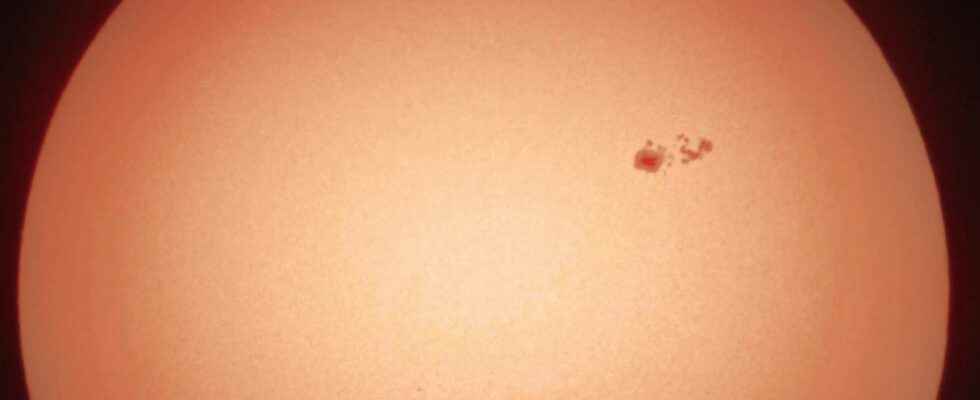For the past few weeks, the activity of our Sun has been increasing. And for the past few days, a sunspot in particular has been in the news. Because its size is important. Because she’s growing fast. Because it is oriented directly towards our Earth as well. Should all this worry us?
You will also be interested
[EN VIDÉO] Sunspot: evolution of light intensity Evolution of light intensity within a numerical model of a sunspot.
AR for “Active Region”. This is how the astronomers designate the spots that appear at the ” surface “ of our Sun. And one of them is waving social networks for a few days. it’s about the sunspot named AR3038. It agitates the networks because, for three consecutive days, it doubled in size every 24 hours. However, specialists in weather report space ensure it: gaining surface area is part of the normal evolution of sunspots during their lifespan, which can last up to a few weeks — or even months, but it is rarer.
The AR3038 looks like it is growing rapidly, it has a Beta-Gamma magnetic configuration, we hope to see its evolution. pic.twitter.com/kI21o2p4yV
—Industrial Engineer Irene Quiroz (@nenecallas) June 19, 2022
AR3038 now spawns more than 2.5 times bigger than our earth. An honorable size, but still far from the 1947 record — a sunspot more than 40 times the size of our Earth. Despite everything, it is this size that seems important to our eyes which speaks. Because the larger a sunspot becomes, the greater the probability that it will give rise to a solar flare, too. Yet, according to scientists, AR3038 remains “modest size”. Exactly the kind of sunspots astronomers expect to see at this point in the cycle.
Huge sunspot group AR3038 imaged this afternoon through a brief sucker hole in the clouds. AR3038 has doubled in size over the last 24 hours! pic.twitter.com/rSl2dS6YFK
—David Hoskin (@d_hoskin) June 20, 2022
No risk for our Earth
And above all, it is not complex enough to generate a major solar flare. The risk is only estimated at around 10%. It climbs to 30% if we consider an eruption of medium magnitude.
So, even if AR3038 is stack oriented towards our earth, we don’t have to worry about what this spot on our Sun has in store for us. For the time being, it has only produced class C solar flares. Flares of too low intensity to affect the Earth. Larger eruptions could still occur in the coming week, however. An M-class flare, possibly. But a priori, nothing major is in sight.
Interested in what you just read?
